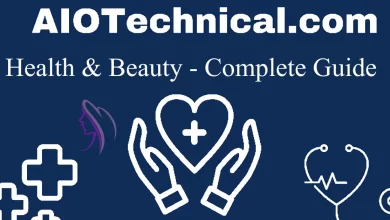Ensuring patient safety in the healthcare sector is vital and requires collaboration from all stakeholders. In this endeavor, four key stages stand out as pillars, each of which is essential to improving the quality of care given to patients. Healthcare professionals may foster situations where patients feel confident in the care they receive by comprehending and putting these principles into practice. This will eventually enhance everyone’s health results.
Employee Education and Training:
Healthcare facilities should establish comprehensive training programs to guarantee that all staff members have the information and abilities required to keep patients safe. A wide range of topics, such as infection control techniques, acceptable medication dispensing practices, and emergency response protocols, should be included in these seminars. To ensure that staff members are aware of the most recent developments in safety protocols and healthcare procedures, these training modules must undergo regular revisions.
Developing a culture of continuous learning and improvement among healthcare workers is also essential. Promoting chances for professional growth and continuous education guarantees that employees remain current on evidence-based guidelines and best practices related to patient safety. Training sessions should also highlight effective communication and teamwork to promote staff collaboration and avoid mistakes in patient care. Healthcare institutions may greatly improve patient safety results and offer everyone high-quality care by investing in staff education and training.
Using Technology:
Enhancing patient safety in healthcare requires the use of technology. Integrating electronic health record (EHR) systems is one important technological advancement that centralizes patient data and lowers the possibility of data management errors. Healthcare professionals may promptly and accurately access patient records with EHR systems, empowering them to make well-informed decisions on patient care. The use of barcode scanning technologies in medicine administration is another significant technological advancement. By scanning the barcodes on medicine labels and patient wristbands, these devices lower the possibility of medication errors and help to guarantee that patients receive the right medications and amounts.
Furthermore, by enabling remote access to medical services, telemedicine platforms have grown in importance in improving patient safety. In times of epidemics or pandemics, telemedicine minimizes the necessity for in-person visits and lowers the danger of infection exposure by enabling patients to consult with healthcare experts electronically. Healthcare facilities can raise the standard of care they provide patients and increase patient safety by implementing technology.
Empowerment and Engagement of Patients:
Patients are more likely to raise questions and express concerns about their care when there is open communication between them and the medical staff. This communication ensures patients’ active participation in decisions about their health and treatment programs. Furthermore, giving patients access to informational materials and tools gives them the confidence to take charge of their health by helping them understand their problems, available treatments, and drugs.
Furthermore, by implementing patient feedback systems, healthcare institutions can obtain important information about possible safety concerns and areas that need development. Healthcare professionals who actively listen to patient feedback are better able to swiftly address issues and make the necessary adjustments to improve patient safety measures. In addition to improving the patient experience overall, patient participation in treatment lowers the likelihood of errors or unfavorable occurrences and improves healthcare outcomes.
Ongoing Enhancement of Quality:
Healthcare providers can pinpoint areas for improvement and put preventative measures in place to stop such incidents by instituting routine review procedures to evaluate safety events, near misses, and adverse events. Facilities can create focused action plans to address underlying problems and reduce risks by analyzing data from patient safety events to find trends and patterns. Healthcare facilities can continuously improve patient safety measures and, as a result, the overall quality of care given to patients by implementing data-driven techniques and continuing quality improvement activities.
Additionally, all healthcare staff levels must be included in the process of finding possibilities for improvement as part of continuous quality improvement. A transparent and accountable culture is fostered by encouraging frontline healthcare staff to report safety events and offer feedback on potential remedies. Healthcare facilities can leverage the aggregate knowledge and skills of their workforce to adopt effective solutions for improving patient safety by incorporating staff members in the improvement process. Frequent training sessions and conversations on quality improvement projects also guarantee that employees will continue to be dedicated to maintaining the highest standards of patient safety and care.
Conclusion:
Healthcare institutions may enhance patient care and create safer workplaces by placing a higher priority on staff training, technological integration, patient engagement, and continuous quality improvement. Recall that your dedication to these actions not only improves patient safety but also fosters patient confidence in the healthcare system. You may help create a culture of safety and excellence in healthcare by cooperating and staying committed to these values, which will eventually improve outcomes for everybody.




